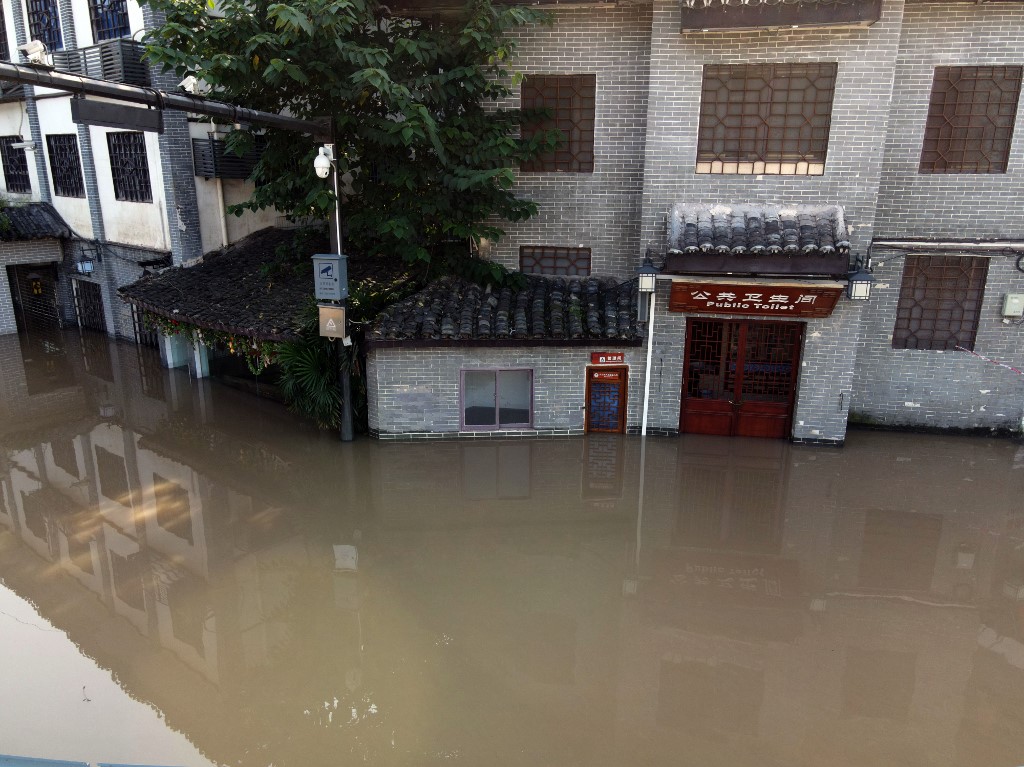(ATF) The flood crisis centred on China’s Yangtze River basin has taken a staggering toll. And, of course, it is not over yet.
The Ministry of Emergency Management released details about the disaster on Tuesday July 28, saying the main flood season which began on June 1 had led to 54.8 million disasters in 27 provinces, autonomous regions and municipalities.
The areas worst affected include Jiangxi, Anhui, and Hubei provinces.
Some 158 people were listed as dead or missing, while 3.76 million had been displaced.
A vast number had had to be urgently resettled because 41,000 houses had collapsed and 368,000 were damaged to varying degrees.
Meanwhile, the flooding had swamped and affected crops over a huge area – 5,283,000 hectares.
Officials said the direct economic loss was now 144.43 billion yuan ($20.56 billion). This was nearly 14% greater than the same period for the past five years.
Compared with the same period over the past five years, the number of people affected by disasters had increased by 23%, but the number of people killed and missing had dropped by 54%. The number of emergency rescues had risen by 36%, but the number of houses that had collapsed was down by 68%.
Officials at the National Defence Economics Conference had decided to maintain the flood control response at its second-level for the Yangtze and Huaihe Rivers. This will be maintained for 17 consecutive days.
Huang Ming, deputy commander-in-chief of the State Administration of Defence and Secretary of the Ministry’s Party Committee, presided over a flood prevention and disaster relief meeting, which discussed and judged rainwater and flood conditions with the officials from the ministries of Water Resources, Natural Resources, and the China Meteorological Administration, as well as other people deployed through the Yangtze and Huaihe River basins and key northern areas for flood control and disaster relief work.
Officials at the meeting stressed that it is necessary to pay close attention to how the flood situation develops. They must guide and urge people in key areas to strictly implement various flood prevention and disaster relief responsibilities, while strengthening flood monitoring and early warning and risk investigation.
They were told to inspect and “defend” key areas and important dikes, and to try to eliminate major hidden risks in a timely manner.
Cadres were told to pay close attention to various tasks such as force deployment, storage of materials, transfer and avoidance, and post-disaster resettlement assistance. They have to actively help affected people to restore the order of production and life as soon as possible.
‘Rain belt to move north’
Weather forecasters have said the rain belt will moves north on Wednesday July 29, so heavy rainfall was expected in the Huanghuai, in northern China and in the northeast region. They said heavy floods may occur in the Haihe, Yellow and Songliao rivers.
The State Administration of Defence and the Ministry of Emergency Management called on officials in key northern areas to “resolutely overcome paralysis and a mentality for taking chances” – because they must focus on preventing major floods or fighting major floods and rush to deal with major risks.
Officials were told to deploy rescue efforts in major disaster areas, and take responsibility to prevent flooding, while investigating risks and exposing any hidden dangers.
Cadres were told to strengthen forecasting and early warnings, and boost consultation on inspections and defences, while sending out rescue teams and supplies, and focus on preventing floods, mountain torrents, landslides, mudslides and urban waterlogging in small and medium-sized rivers.
They must promptly transfer threatened people, and take effective measures to ensure people’s lives are safe.
“Put safety first and put it into practice,” they were told.






















